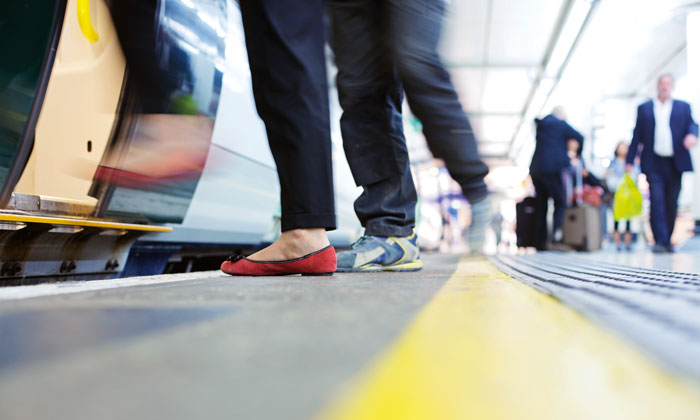How can rail companies rebuild customer relationships?
Posted: 6 June 2017 | Dave Sampson | No comments yet
For Global Railway Review, Dave Sampson, Commercial Director of Trolex|Aporta, a global supplier of on-board digital systems to transportation markets, explains that rail companies have a real opportunity to use the latest digital solutions to improve passenger experience, rebuild customer relationships and create new revenue streams…


From ticket price rises, to strikes and regular delays, the UK’s rail companies are rarely out of the headlines. Despite this negative press, passenger numbers continue to rise, but so do passenger expectations, demanding more from rail providers to justify the ever-increasing ticket prices.
Delightful journeys
The way in which people pass their time whilst travelling has changed fundamentally, with most using mobile devices to watch movies, TV shows, stream music and read online news. However, given the quality of network performance on a moving vehicle, frequent interruptions to the network connection are common.
And this is the problem: Wireless services are now expected everywhere. The challenges associated with delivering many concurrent users with high quality internet access on moving vehicles, be it train, tram or coach are well-documented.
Home from home
Let’s rethink digital service delivery. Passengers want the same digital experience as they get at home or in the office. However, despite technology evolution, the current delivery of on-board Wi-Fi for passengers cannot provide the expected level of consistent, high quality bandwidth; too many people connecting via too few mobile masts, and cuttings, tunnels and embankments making the signal at best inconsistent and often non-existent. A different model is required, one that leverages an intranet to deliver digital on-board services.


A more powerful version of technology used at home, a Wi-Fi intranet or ‘offline’ network, enables passengers to access digital content streamed directly to laptops, tablets or phones, from an on-board server without any connectivity failure or buffering.
On-board digital services can provide transport operators with a wide range of content; different genres from kids’ animation, news and documentaries to horror and sci-fi, in audio, text and video formats, with or without subtitles or closed captions for the hard of hearing and nearly 200 languages from Gaelic to Pashtu. To maximise passenger engagement, content can be tailored to match the specific needs of the passengers.
Home plus
This closed network also opens up a number of opportunities to further enhance the passenger experience by enabling travel operators to solve problems in ways that make it easy and straightforward for passengers. Making passenger journeys hassle-free and solving little irritations can make a huge change in the perception of the overall service.
For example, sending ticket information and seat number confirmation directly to a passenger’s mobile phone not only improves the customer experience but also removes the need for TOCs to place seat reservation cards at the beginning of every journey.
In-seat ordering services would allow easy food or drink ordering from the buffet car, increasing sales. Furthermore, giving passengers the option to collect or have the purchases delivered to their seat improves customer service.
Services can also be extended to improve rail passenger safety and security. In addition to linking with CCTV or providing instant travel updates or security alerts, it can be used to address a key passenger concern; luggage theft. Passengers can be offered a luggage alert system which tracks physical RFID luggage tags and provides an immediate text notification if an item is moved during the journey.
Show me the money!
Well thought-out digital on-board services provide tangible opportunities to create new revenue streams; monetising premium content, such as the latest blockbuster movies or live TV, and enabling pre-booking of hotels, rental cars, tourist trips and restaurants at the destination.
Having access to passengers whilst on a journey is incredibly appealing to advertisers, as it is one of the few times where an audience has a high dwell time and increased opportunity for engagement, driving further engagement and opportunities to improve other aspects of the passenger experience. This opens the way to drive additional income through advertising and sponsorship packages.
Conclusion
In a challenging marketplace, where TOCs are constantly fighting to enhance their public perception, journey quality is an area that can easily be enhanced. Embracing a new model for digital on-board services provides TOCs not only with an ability to meet and exceed rising customer expectations, but also drives down costs and taps into an incremental revenue stream.







